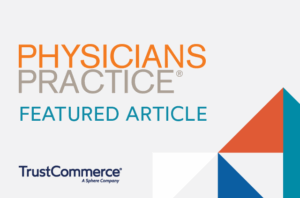There’s a lingering assumption in healthcare that older adults aren’t interested in digital healthcare payments. But the data tells a different story. Today’s seniors are more tech-savvy than ever, and when it comes to paying for care, they want the same flexibility younger generations expect.
A recent TrustCommerce survey of 400 U.S. healthcare consumers confirms it: nearly 60% of adults over age 60 say they’re at least somewhat comfortable using digital payment methods for healthcare. That includes mobile wallets, bank transfers, and paying through an online portal. These tools aren’t foreign to seniors; they’re already using them. And they want the option to do more.
Seniors are already going digital
The numbers speak for themselves. According to our survey, older adults most often use digital payments in healthcare for doctor visits (62.5%), prescription medications (59.5%), and lab tests (31.25%). Some are even using them for virtual visits and hospital bills.
When asked how they prefer to pay, seniors’ choices are almost indistinguishable from the rest of the population: credit cards first, then debit cards, followed by digital wallets and cash. These aren’t fringe preferences. They reflect a shift in how people, regardless of age, expect to engage with their providers.
That shift isn’t surprising when you consider who today’s seniors are. Many belong to the baby boomer generation: smartphone-savvy, comfortable with digital banking, and fluent in everyday tech. For them, digital isn’t new. It’s just normal.
Comfort doesn’t mean concerns are gone
But while more seniors are open to digital payments, that doesn’t mean they’re entirely confident in them. Our research found that 71% of all respondents, including older adults, reported at least one concern. Security topped the list, followed by privacy, trust in the system, and difficulty navigating technology.
One area worth attention: nearly 80% of consumers said they weren’t sure whether their healthcare provider accepts mobile payment options like Apple Pay or Venmo. Rather than disinterest, this uncertainty may suggest a need for clearer communication from healthcare providers.
Digital payment solutions in healthcare have the power to streamline billing and enhance the patient experience, but only when patients know they’re available and how to use them. Clear communication, education, and easy access can turn a common gap into a meaningful advantage.
It’s not just a trend—it’s becoming the new baseline
Digital payment adoption among older adults is no longer the exception, it’s an emerging expectation. As healthcare costs continue to rise and patient financial responsibility increases, so does the need for simpler, more transparent billing experiences.
Healthcare organizations that offer secure, flexible, and easy-to-use payment tools will be better positioned to meet expectations, reduce administrative friction, and improve satisfaction across patient age groups.
Want more insights?
Curious how older adults are engaging with digital healthcare payments, and what steps providers can take to meet them there? Explore our infographic featuring insights from our newest consumer survey from TrustCommerce.




